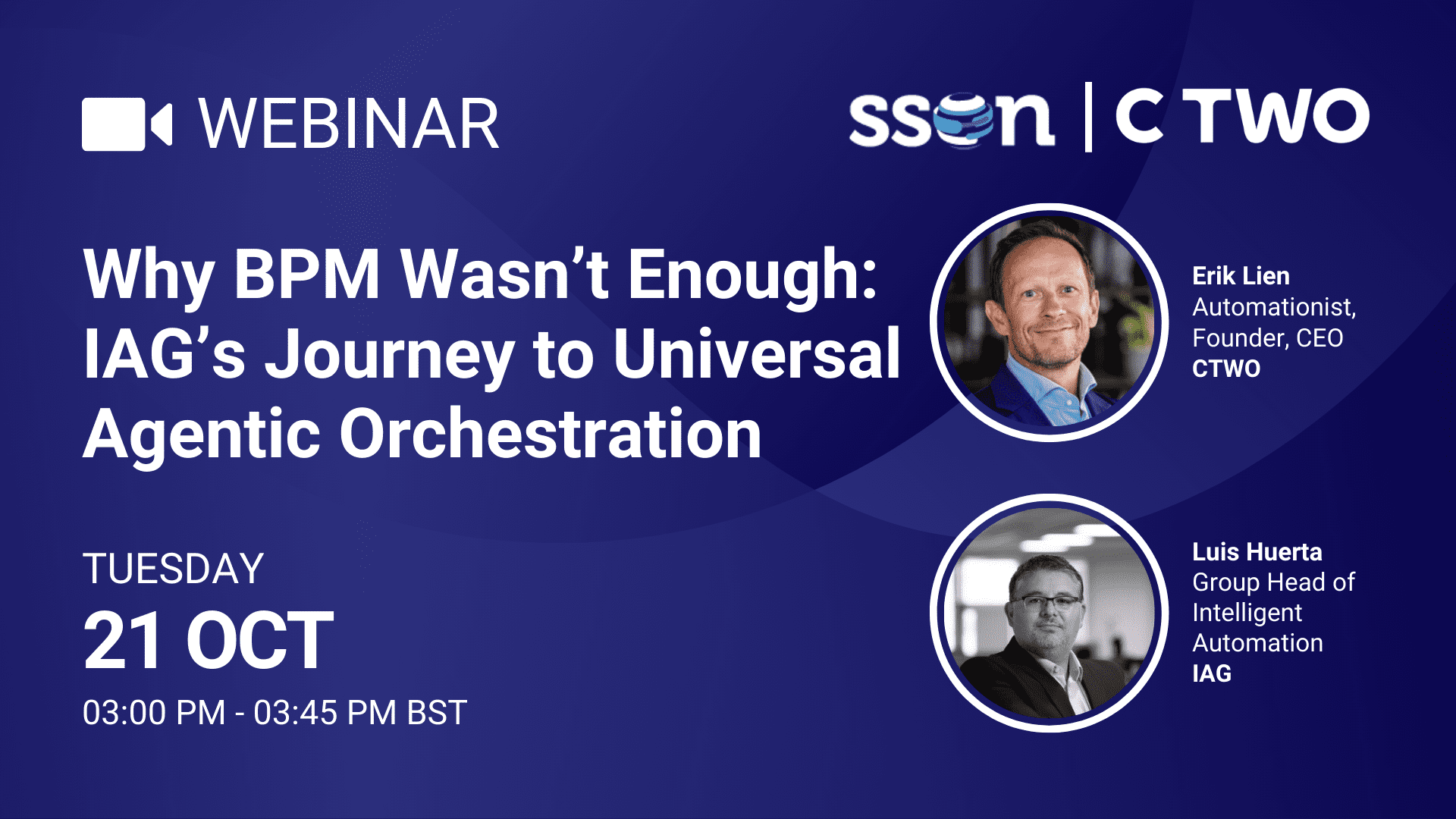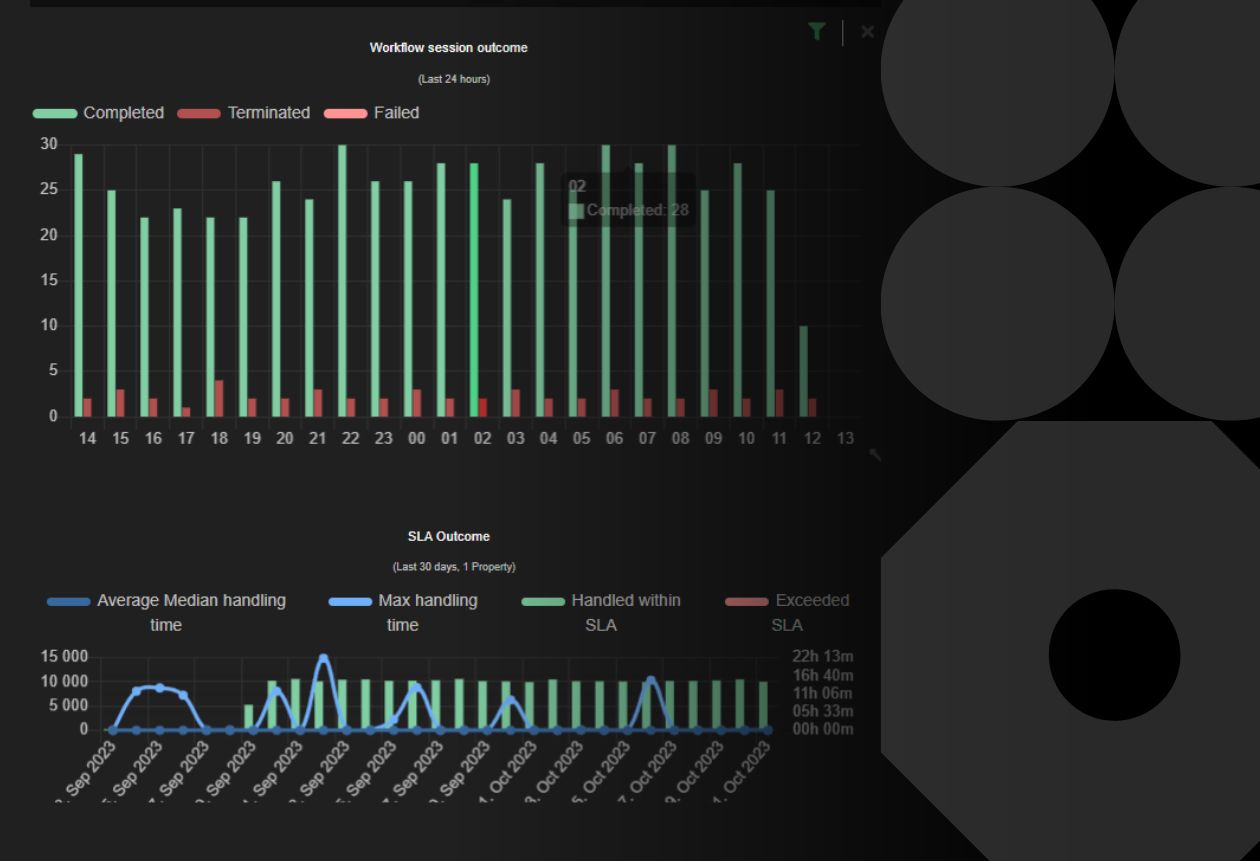For decades, Business Process Management (BPM) was the backbone of enterprise automation. It brought order to workflows that were structured, predictable, and mostly human-driven. Approvals, document routing, compliance checks—BPM managed them well.
But the world has changed.
Enterprises today don’t just have people and linear workflows. They run on a digital workforce of RPA bots, AI copilots, agentic AI systems, APIs, and microservices—all operating in parallel, making real-time decisions, and demanding resilience.
And here’s the hard truth: BPM wasn’t built for that. Universal Agentic Orchestration (UAO) is.
Where BPM Breaks Down
BPM assumes processes follow a fixed, rules-based path. In an agentic, AI-driven world, that becomes a liability.
- Rigid and costly to implement → BPM relies on heavy rules and modeling. Every exception requires redesign, slowing down innovation and driving up costs.
- Blind to resources and capacity → BPM can move work forward, but it doesn’t understand available capacity or dynamically rebalance workloads.
- No SLA-based prioritization → BPM pushes items step by step, regardless of urgency, deadlines, or resource availability.
- No resilience → When a bot, API, or process fails, BPM doesn’t heal it. Incidents ripple across workflows until humans step in.
This is exactly what International Airlines Group (IAG) discovered as their automation program matured. Their BPM couldn’t deliver the adaptability or resilience they needed.
From BPM to Universal Agentic Orchestration
That’s why enterprises are moving to Universal Agentic Orchestration (UAO)—a new automation backbone that acts less like a process flowchart and more like a conductor.
Instead of dictating each step, UAO dynamically orchestrates bots, agents, APIs, and people to achieve business outcomes—while maintaining visibility, governance, and control.
Think of BPM as a map. Useful when the route is known and fixed.
But today’s enterprises need a GPS—adapting in real time to traffic, road closures, and new destinations.
That’s UAO.
Why Enterprises Choose C TWO for Universal Agentic Orchestration
Some automation vendors have recently added orchestration layers—UiPath with Maestro, SS&C Blue Prism with AI Gateway—which reinforces what we’ve been saying since day one: automation needs orchestration. But these solutions aren’t built for the realities of multi-vendor estates.
And no enterprise runs 100% UiPath, or 100% Microsoft, or 100% anything.
C TWO was built differently—from the ground up as a vendor-agnostic orchestration platform. That’s why enterprises like IAG choose us.
- Tool Agnostic by Design → Works across UiPath, SS&C, Microsoft, Automation Anywhere, custom AI agents, and more.
- Beyond RPA + AI → Orchestrates everything: bots, APIs, GenAI agents, human workers, and legacy systems.
- Scale Without Complexity → Customers add dozens of new automations without extra infrastructure.
- Resilience & Reliability → Automated incident resolution and SLA-based prioritization keep operations running.
- Governance Across Ecosystems → One pane of glass for orchestration, compliance, and optimization.
Why This Matters Now
The automation market is at an inflection point. Enterprises that stick with BPM or tool-specific orchestration risk:
- Getting locked into a single vendor ecosystem
- Struggling to integrate agentic AI into operations
- Missing opportunities to scale automation cost-effectively
- Losing visibility across fragmented estates
Universal Agentic Orchestration is quickly becoming the new connective tissue of enterprise automation—ensuring technologies and humans work better together.
Dig Deeper Into UAO
IAG, one of the world’s largest airline groups, found that BPM couldn’t provide the control, resilience, or adaptability they needed for their automation program. With C TWO’s Universal Agentic Orchestration, they now run smarter, more connected operations where bots, AI agents, and people operate in concert.
Want to hear how they did it? Join our webinar: “Why BPM Wasn’t Enough: IAG’s Journey to Universal Agentic Orchestration.”
You’ll learn:
- Why BPM fell short for IAG’s scale and resilience needs
- How UAO works in practice—not just theory
- What the future of automation looks like with Agentic AI





